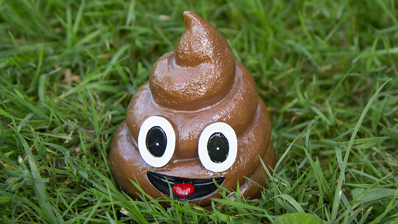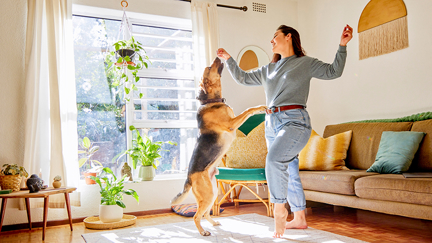Here is the guide to 'the perfect poo'
- Publish date
- Monday, 2 Oct 2017, 2:30PM

We tend to not give it much thought, but our bowel movements can reveal a lot about our health.
And one nutritional therapist is urging the nation 'it's time we took notice'.
In her new book, Be Good to Your Gut, Eve Kalinik outlines the four factors to consider when it comes to assessing your stools and ensuring you have 'the perfect number 2'.
It comes after a survey last year revealed one third of British people have no idea what a normal bowel movement should look like, reports Daily Mail.
And even more worrying is that a quarter of us have stools which are not deemed 'medically healthy', scientists have warned.
Abnormal number twos can be an early indicator of serious health issues such as bowel cancer or Crohn's disease.
Ms Kalinik says we should monitor how regular, consist, efficient and satisfactory our movements are...
Why the colour is important
The book stresses that colour is also an important marker to consider.
Old blood cells are also transported out of the body via the stool, which accounts for its natural mid-brown colour.
If a yellow hue or a clay colour is evident, it can be indicative of some dysbiosis in the gut or liver and gall bladder issues.
Bright red specks of colour can be caused by haemorrhoids while darker red or black stools are "red flag symptoms" that should be checked out by your doctor.
"I'm not suggesting you need to check your number twos obsessively, but noticing even subtle changes can give distinct clues to any unbalances in the gut and our overall health," writes Ms Kalinik.
The four factors
Regulatory
Once to twice a day spent on the bathroom throne is ideal, according to the expert.
Any more or less than that means things are possibly not moving through the gut as they should be.
Consistency
Consistency of our stool is also a good indicator of gut health. Ideally, it should look like a long soft log that is like an ice cream in texture.
It should be fully formed, and should not have cracks or be too mushy. Hard little lumps and watery liquid would be the extremes of this.
The Bristol Stool Chart (see below) is an excellent reference and illustrates perfectly what your faeces should look.
Efficiency
Movements should be smooth, quick and pain free. Taking a book into the bathroom should not be a prerequisite!
Satisfaction
When you have fully evacuated you should experience a sense of elimination 'euphoria' and finish with a smile on your face (not with the feeling that you'll be back on the throne in 10 minutes).
Do you know what faeces is made up of?
She also points out that, contrary to what many people believe, our stools are not simply the remnants of the food that we have eaten.
They are mostly made up of water, which is why constipation is often simply the result of dehydration.
The remainder is a combination of indigestible fibre, additional toxic substances that the body needs to get rid of (such as medications or cholesterol) and gut bacteria that have come to the end of their natural life.
Ms Kalinik says in fact, it is thought that just 1 gram of stool contains more bacteria that there are stars in the universe.
If you experience pain with your movements or bowels, see your GP.
Be Good to Your Gut by Eve Kalinik is published by Piatkus and is available for £20 (NZD $37) here.
/arc-anglerfish-syd-prod-nzme.s3.amazonaws.com/public/JWOUETANCVE5DE7IZWSFDDPEXI.JPG)
What are the signs of bowel cancer?
Bowel cancer is very treatable but the earlier it is diagnosed, the easier it is. People whose cancer is diagnosed at an early stage have a much higher chance of successful treatment.
Symptoms include:
• Bleeding from your bottom and/or blood in your poo
• A change in bowel habit lasting three weeks or more
• Unexplained weight loss
• Extreme tiredness for no obvious reason
• A pain or lump in your tummy
Most people with these symptoms don't have cancer. But if you have one or more of these, so see your GP.
Source: Bowel Cancer UK
Tips to keep your stools healthy
Eat more fibre
- Constipation is often due to inadequate fibre. Good sources include fresh fruit and vegetables, beans, wholegrains, nuts and bran based cereal.
Drink more water - Since constipation is caused by dehydration in the colon, you need to make sure you are drinking lots of water.
When you are properly hydrated, less water will be withdrawn from the colon. This will keep your stool soft and easy to pass.
Don't rely on laxatives - Improper use of laxatives can actually make symptoms of constipation worse.
Reduce stress - This can cause the large intestine to spasm, leading to pain and hard stools. Techniques that may help include yoga, meditation and exercise.
This article was first published on Daily Mail and is republished here with permission.
Take your Radio, Podcasts and Music with you




